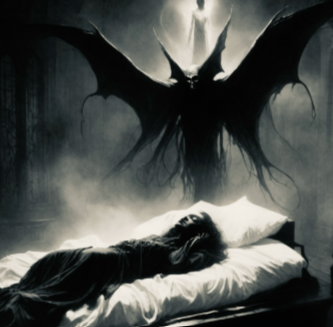
B.M. Scott
21 August 2025
My Paranormal Experience: Indiana State Sanitorium (Pt. 1)
I have not shared this story with anyone over the last three months, owing to its extraordinary nature and the depth of personal impact it has had upon me. The magnitude of these experiences is difficult to articulate without risking skepticism or derision—yet, in the interest of intellectual honesty and reflective inquiry, I feel compelled to share the record and experiences here.
In May of 2025, I was undertaking research for a broader academic study examining the convergence of spatial elements between curative spa retreats, hotels, and hospitals in late nineteenth and early twentieth centuries America. This micro-historical approach was intended to shed light on the broader implications of popular culture within the context of the era. In other words, my research was centered on the symbiotic relationship between healthcare institutions and hotels—instances in which regional hospitals borrowed architectural elements and comforts from hotels. Conversely, I was interested in structures which originated as hotels repurposed to meet medical demand, and the gradual transformation of health spas into luxury resorts. This study - structured around a series of detailed case studies - proved intellectually rewarding and led me to visit the Indiana State Sanatorium—later the Lee Allen Bryant Psychiatric Hospital—on both April 29th and May 1st, 2025. At this time, I had taken a week of PTO from professional obligations to fully immerse myself in both archival research and on-site observation. My interest in these first two visits was strictly academic and humanistic - unprompted by paranormal association. My attention was dedicated to photographic and written documentation of architectural features, patterns of spatial organization, and the likely routines governing institutional daily life at the peak of its occupancy. Initially, the tuberculosis history of the sanatorium was tangential to my primary concerns - but as I delved deeper, I came to view the hospital’s subsequent transformation into a psychiatric facility as a logical extension of its former role.
However, my interest in the research changed markedly and soon subsided during my 2nd visit on May 1st, 2025. While carefully surveying a ward once dedicated to tuberculosis patients, I encountered something distinctly unsettling - a green curtain near a corridor entrance of the Tuberculosis hospital lifted abruptly, as though grasped by unseen hands. Expecting a rational explanation - perhaps a youthful prank - I advanced only to see the fabric settle back in place without anyone present. Though not prone to superstition, I found the remainder of my time at the site curiously disquieting. Whispered sounds, phantom footsteps, the dull closing of unseen doors—all persisted, accompanied by a lingering sense of being watched. Fleeting shapes teased the edge of my periphery as I stayed until closing - unsettled; and half-wondering if something (perhaps dust or mold) could be causing visual distortions or hallucinations.
That evening, still troubled, I instinctively turned to my notebook some may call a reflective journal or an observational journal—a tool I use to order my thoughts. I was exhausted. Initial, aimless scribbles soon gave way to discernible words and shapes. I closed my eyes and began writing words and shapes that came to mind. The name: “Josephine Sulava” surfaced repeatedly, which I initially dismissed as a figment of a restless mind. To humor myself (considering it perhaps a creative exercise of the subconscious), I began formulating direct questions—“Where are you buried?” The response became striking in their clarity:
“Riverside. Riverside. Riverside.”
Skeptical, but now intrigued - I kept these notes and began reading about the phenomenon typically termed “automatic writing," from which I began.
This same evening, I began to search for other methods of communication - and as curiosity would have it, I decided to purchase a so-called “ghost radio," arriving the following day. The ghost radio is a simple analog (or digital) device rewired; continuously sweeping radio frequencies to create word patterns - based on the Estes Method; essentially enabling sensory isolation so that verbal responses can be relayed aloud in real time without influence from the questions being asked. Determined to avoid influencing the results, I initiated a new session without reference to my earlier notes. My first prompt—“If someone is here, make yourself known”—elicited a reply almost at once: my own first name, “Brison,” neither common nor easily explained away. Pressed for further identification, I asked: "Who is here?" The reply came:
“Josephine SULAVA...Riverside."
After a few hours of transcription, the final message before I turned off the device was enigmatic in the extreme:
“Palliative serum lost… dangerous substitute.”
From these uncertain beginnings, my involvement was strongly compelled - eventually [over the course of 3 months] filling 3 binders with notes, transcriptions, and automatic drawings.
Taking all of my compiled notes, drawing, and information from these first few days following my last visit on May 1st, local cemetery records in Rockville returned nothing. Casting a wider net, I looked to neighboring Clinton, Indiana.
A record appeared:
Josephine Sulava, born March 10, 1910 in Clinton, IN.; Died August 21, 1926 in Rockville, IN.
The record did not reveal her cause of death—nor did the obituary transcripts—but, in my heart, I felt the riddle was solved.
I was very wrong. As subsequent developments would indicate to me - what seemed a conclusion was merely the prelude to a narrative far stranger than I could possibly have anticipated.
(To be continued)
Add comment
Comments